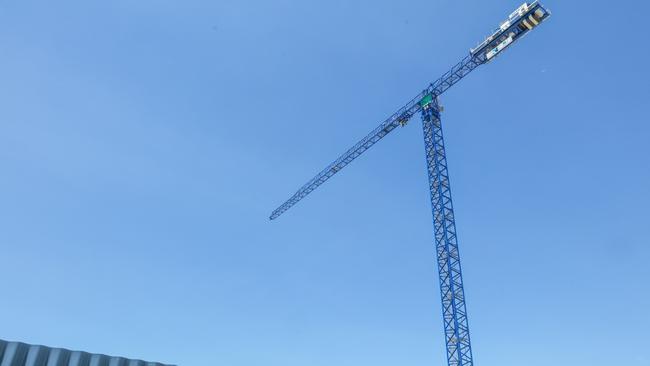Foundations laid as project steams ahead
Charles Darwin University has poured the slab for its Darwin City campus, opening in 2024.
Northern Territory
Don't miss out on the headlines from Northern Territory. Followed categories will be added to My News.
UPDATED: FOUNDATIONS have been laid for the new Charles Darwin City campus as the project steams towards a 2024 opening.
The $250m education and community campus will be home to business, education and art students alike as the University aims to move key courses closer to the city.

Dean of Indigenous Futures, Education and the Arts, Professor Ruth Wallace said the University was bringing important teaching and research to the city, where the businesses, industry and students are.
“Through the new education and community precinct, we want to be connected to the Territory and our students,” she said. “There will be opportunities in studying across Education and the Arts focused on First Nations education, professional development, digital learning, and leadership that is really important to the NT.”
In addition, CDU will move the Art Gallery from Orange Building 12 in Casuarina to the new city campus where it can showcase students and artists’ works.
Professor Wallace said there are going to be activities in the art gallery and makerspace for students, staff and researchers to share their work with the community.
The campus also has plans to engage more young people in tertiary education through a pathways program which will centre Indigenous educators and knowledge holders.
The project is part of the $320m Darwin City Deal funded by the Federal and Territory government to diversify Darwin’s local economy.

CDU Vice-Chancellor, Professor Scott Bowman AO, said the project had reached a major milestone.
“Pouring of the 2,700 cubic metre slab, which forms the base of the two-level underground carpark, has been undertaken in 12 sections and began in October 2021,” Prof Bowman said.
“The project has come a long way in a short period of time...once complete, the iconic main building will establish Darwin as a university city.”
EARLIER: DARWIN City’s skyline has a new feature, marking a milestone for one of the CBD’s most significant projects in recent years.
A Comansa hammerhead tower crane was recently erected at the site of Charles Darwin University’s new CBD campus, along Garramilla Blvd.
The crane will grace the city’s skyline until 2023.
It has a 50m radius and can lift 18 tonnes.
It will be used to transfer construction materials onto the site including precast concrete panels and steel members, alongside mobile cranes.
Another similar height tower crane will be erected on the Litchfield St side of the site in early 2022.
It will have a rising jib boom so it can be raised and lowered to accommodate the larger crane.
CDU Vice-Chancellor Scott Bowman said the crane signified a crucial step in construction.
“The sight of a massive crane really indicates the scale of the project and the fact that construction is about to ramp up considerably in 2022 as the main building starts to come out the ground,” Prof Bowman said.

“Territorians can expect to see more activity and works on site as the project progresses.”
Prof Bowman said more than 700 jobs would be created during the construction process.
Once complete in 2024, the precinct will house CDU’s Asia Pacific College of Business and Law, disciplines of the College of Indigenous Futures, Education and the Arts, Information and Technology and the university’s art gallery.
It will also house a purpose-built home for the Northern Territory Library, community spaces and more than 230 underground carparks.
Local company Halikos was awarded the $190.1m design and construct contract for the main building in October.
The tower crane marks a significant milestone for the Darwin construction industry, being the first in more than a year.
According to the Rider Levett Bucknall Crane Index, released in October, the last tower crane in Darwin’s skies was in early 2020 during the construction of Manunda Place.
The report forecast the likelihood of increased crane activity due to a 213 per cent rise in non-residential building approvals in the 2021 financial year.




